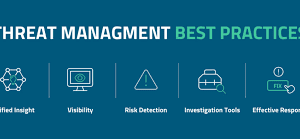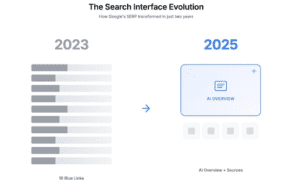In a world where customers expect their deliveries yesterday, the pressure on logistics to perform flawlessly has never been higher. For businesses grappling with the complexities of global supply chains, one of the most persistent pain points is maintaining the delicate balance between inventory accuracy and availability.
This is where 3PL inventory management becomes a game-changer. It serves as the critical link between products and customers across continents. As you face the daily challenges of overstocking, understocking, and logistical errors, imagine a solution that not only addresses these issues but transforms them into opportunities for growth and efficiency.
This article gets into how cutting-edge technology is revolutionizing 3PL inventory management. Read on to discover how these technological advancements are solving age-old logistics challenges and paving the way for a smoother, more reliable supply chain.
What is 3PL Inventory Management?
Third party logistics, or 3PL, refers to the outsourcing of logistics processes. It includes warehousing, inventory management, and fulfillment, to an external provider.
The importance of effective 3PL inventory management cannot be overstated. It ensures that products are accurately tracked, stored, and distributed to minimize errors and delays. This is crucial for maintaining customer satisfaction and operational efficiency.
However, 3PL inventory management comes with its own set of challenges. Managing diverse inventories for multiple clients requires robust systems and meticulous coordination. Issues that can lead to significant problems include:
- Inaccurate stock levels
- Delayed shipments
- Mismanaged inventory
For logistics companies in Atlanta and beyond, these challenges can disrupt supply chains and impact business reputation.
The Evolution of Inventory Management Technology
The journey from manual inventory management to sophisticated digital solutions has been transformative. Initially, businesses relied on handwritten logs and physical stock counts. This method was not only labor-intensive but also prone to errors.
The advent of computer systems in the late 20th century marked a significant milestone. It introduced basic inventory management software that automated some processes and reduced manual errors.
In recent years, technological advancements have further revolutionized 3PL inventory management. The introduction of barcode scanning in the 1970s allowed for faster and more accurate data entry.
This was followed by the development of Warehouse Management Systems (WMS) in the 1990s. This provided comprehensive tools for managing warehouse operations.
Today, modern WMS solutions offer:
- Real-time tracking
- Integration with other business systems
- Advanced analytics
Latest Technologies in 3PL Inventory Management
Warehouse Management Systems (WMS) have become a cornerstone of effective 3PL inventory management. These systems provide end-to-end solutions for managing warehouse operations, from receiving and storing goods to picking and shipping orders.
A robust 3PL warehouse management system:
- Enhances visibility
- Improves accuracy
- Streamlines processes
Automation and robotics are also making significant inroads in the logistics sector. Automated storage and retrieval systems (AS/RS) and robotic pickers can operate around the clock, increasing efficiency and reducing labor costs. These technologies minimize human error and improve the speed of operations.
Radio Frequency Identification (RFID) and the Internet of Things (IoT) are other critical technologies reshaping inventory management.
RFID tags enable real-time tracking of inventory, providing precise data on stock levels and locations. IoT devices can monitor environmental conditions to ensure that products are stored under optimal conditions. These technologies together offer unparalleled visibility and control over inventory.
Benefits of Technology-Driven Inventory Management
The benefits of incorporating technology into 3PL inventory management are manifold. Firstly, accuracy and efficiency see a marked improvement.
Automated systems reduce human errors, ensuring that inventory records are precise and up-to-date. This accuracy is crucial for maintaining stock levels and avoiding costly mistakes.
Cost reduction is another significant advantage. By automating routine tasks, businesses can cut down on labor costs and improve operational efficiency.
For example, the use of 3PL WMS software can streamline processes. It can reduce the need for manual interventions and allow for better resource allocation. This is particularly beneficial for the best 3PL for small business, where cost management is critical.
Customer satisfaction is also greatly enhanced through efficient inventory management. Accurate stock levels mean that products are always available when needed, reducing backorders and delays. Real-time tracking and visibility ensure that customers are kept informed about the status of their orders.
Trends Shaping the Future of 3PL Inventory Management
Artificial Intelligence (AI) and Machine Learning are poised to revolutionize 3PL inventory management. These technologies enable predictive analytics which allow businesses to forecast demand accurately and adjust inventory levels accordingly. This leads to more efficient stock management and reduces the risk of overstocking or stockouts.
Blockchain technology is another trend with the potential to enhance transparency and traceability in the supply chain. By providing a decentralized and immutable ledger, blockchain can ensure that all transactions are recorded accurately and securely. This is particularly useful for logistics companies, where trust and reliability are paramount.
Cloud computing is transforming how inventory management systems are deployed and accessed. Cloud-based solutions offer scalability, flexibility, and real-time data access from anywhere.
This is especially advantageous for 3PL for small business. It enables them to leverage advanced technologies without significant upfront investments.
Implementing Technology in 3PL Inventory Management
While the benefits of technology in 3PL inventory management are clear, integrating these technologies can be challenging. Businesses must navigate issues such as data integration, system compatibility, and employee training. Successful implementation requires careful planning and a phased approach to minimize disruptions.
Adopting best practices can facilitate the seamless integration of new technologies. It is essential to choose the right technology that aligns with the business’s specific needs.
Investing in employee training ensures that staff are proficient in using new systems and maximizes their potential. Regular reviews and updates are necessary to keep the technology current and effective.
Stay Ahead of Innovations Shaping Modern 3PL Services
3PL inventory management is no longer about storing and retrieving goods but has evolved into a complex orchestration where technology plays the lead role. From RFID tags to sophisticated warehouse management systems, technological advancements have not only streamlined operations but also enhanced accuracy and customer satisfaction.
This exploration reveals that staying updated with the latest technology is crucial for any 3PL provider aiming to thrive in the logistics domain. To go deeper into how these innovations can further optimize your logistics operations, visit our blog for more insightful discussions.
Read More From Techbullion And Businesnewswire.com



































